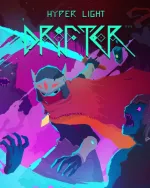Hyper Light Drifter

Developer Heart Machine announced the release date this morning for its upcoming Hyper Light Drifter. The game will be available next week, so we've decided to post our extended feature on the game that appeared in our March 2016 issue of the magazine. You will find the fill feature below.
Hyper Light Drifter has no spoken dialogue or written sto ry. A few lines of text appear during the opening moments to discuss small mechanics, but that’s the last time you see any words. The way currency works is not immediately apparent, because there are no numbers. You have to test your weapons and upgrades because no tutorial explains their function.
“The main motivation is we want to be subtle and implicit,” Hyper Light Drifter’s creator Alex Preston says, “Being explicit can ruin the mystery, or you can’t make the story quite your own.” Everything in Hyper Light Drifter is explained through animation and imagery, and everything is learned through player intuition and experimentation. The result is a narrative led by emotion rather than transparent facts, and gameplay built on discovery instead of tutorial.
From the beginning, Hyper Light Drifter presents a world of mystery and intrigue. The Drifter, the player character, is seen standing amid a collection of dead bodies. A shadowy creature attacks and the scene shifts as he finds himself in front of gigantic humanoid, possibly robotic titans who shatter before him. It’s unclear if this sequence is a peek at the history or future of this world, or if it’s a dream. When I finally get control of the Drifter, I only take a few steps before he hunches over in pain, coughing as the screen fills with red pixels. Thankfully a health pack is nearby, and one of the few tutorials instructs me how to pick it up and use it. The Drifter is suffering from some kind of sickness, but it does little to debilitate his movement and combat abilities.
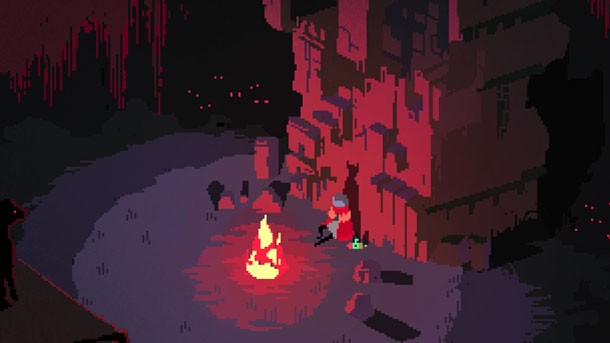
The Drifter can blink from one position to another. I zip around the combat field as I encounter my first enemy – a small goblin-like creature who takes exactly three hits to dispatch. Combat is fluid, and though I have the mobility advantage, the goblin can dole out damage quickly if I don’t stay on my toes. Battles are thoughtful and fast, without getting overwhelming and even the smallest enemy poses a threat.
The blink ability quickly proves to be much more than a combat mechanic, as I use it to move across chasms and between platforms. Blink has no limit to how much I can use it, and it quickly becomes my main mode of movement, even when there are no obstacles requiring its use.
The Drifter makes his way outside, but the mysterious plague grips him again. As the screen fills with red pixels, a shadowy creature, perhaps the same one seen in the aforementioned opening, attacks and everything goes black before he wakes in a house surrounded by computer equipment.
Leaving the home reveals a town, and a device that heals and serves as a platform for fast-travel. Anthropomorphic animals and alien creatures mill about, and a few have stands set up to sell items, but I don’t have any money. Guards stand by the town’s exits, but do nothing to prevent my departure, so I point the Drifter east.
For more from our time with Hyper Light Drifter, as well as interviews with its creators, head to page two.
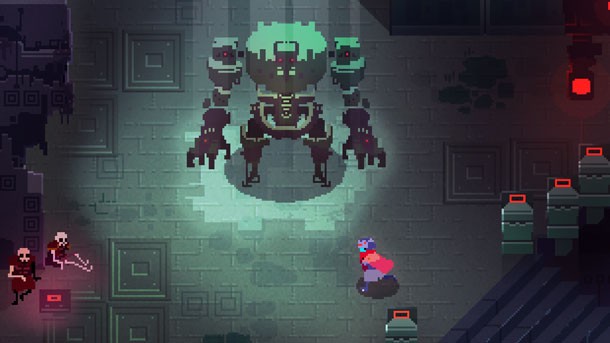
My exploring leads me to a flooded area where I rely on the Drifter’s blink ability to move above the water between platforms. It doesn’t take long to develop a rhythm and speed allowing me to navigate the terrain quickly. What appears to be a man near the area’s entrance shows me an image of a large intimidating frog creature, which is then marked on my map as a destination.
I pass a sword the size of a building collecting moss and foliage from presumed years of abandonment. My first thought is this weapon must have belonged to the titans I saw earlier, but it’s just part of the environment. There’s no indicator of its history outside of my own assumptions. Whatever the case may be, it was clearly dropped on the bridge that leads to my destination, so I have to find a way around. I discover a temple nearby, and inside a number of white-tailed creatures take refuge. One shows me a series of images of their people getting sick and dying – at least that’s how I interpret it. It can’t be a coincidence that my Drifter also has an illness.
After exploring the wider area, tracking down keys to open locked doors, taking on new enemies as well as the goblins I’ve now developed a strategy for, I collect four encased diamond-like objects. These allow me to make my way to the area initially marked on my map to meet a frog boss.
The frog wastes no time on an introduction and immediately starts throwing explosive bottles at me. I can stun him by causing strange plants to detonate under his feet. I retry the fight many times, and finally eliminate the boss. The Drifter has one more bout with his sickness, reminding me of his delicate situation. I then head back to the village to purchase upgrades for my blink ability, as well as a move allowing me to take out multiple enemies in one quick stylish slice.
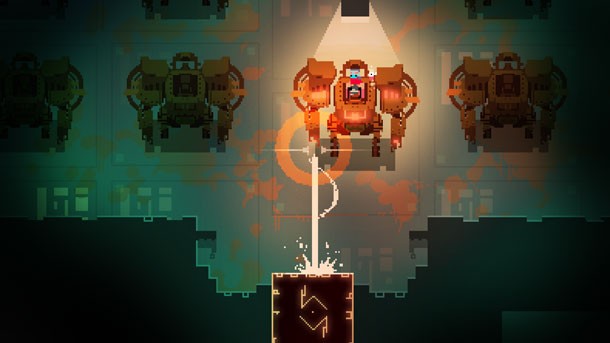
This is just the first of four areas surrounding the central town hub. North is my next destination. Snowy mountains greet me along with another character who shows me a new boss and marks their location on my map. This one looks more human than animal, but I won’t know more until I meet it in person. As I make way up the mountains, a new flying enemy that requires careful timing to hit gives me trouble. I preserve and soon find a locked door at the mountain peak, forcing me to head back down the mountain along a new path.
As I take my first steps in the new direction, the soundtrack (from Disasterpeace of Fez and It Follows fame) swells and the camera pans to show a gigantic dead titan. His arm grips the side of the mountain as though it died while attempting the climb. The creature, or perhaps robot, is the size of a skyscraper compared to the Drifter. I carefully walk up to the titan and stand on its hand, which offers me a view of the nearby landscape as well as a better look at the full titan. Seeing more of the creature fills me with a surprising sense of dread. I don’t know what these titans are or why they seem to have collapsed without warning, but I am intrigued and eager to learn more about the Drifter’s mysterious, imposing world.
For more from Hyper Light Drifter's creators, head to page three.
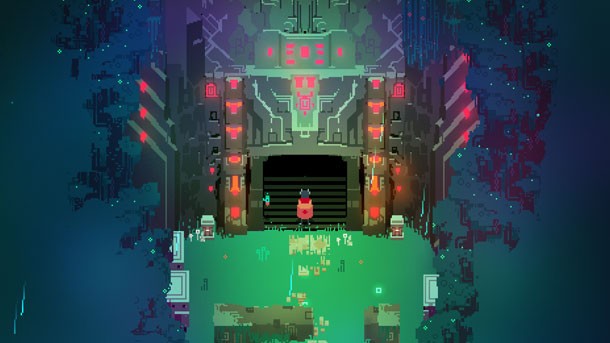
Making The Mystery
“I’m sure every kid has their dream game they want to make. Or they have ideas about games they want to make. This is one of those that stuck around,” Preston says when asked about the Hyper Light Drifter’s origins. The game has been in development in some capacity between Preston and engineer and designer Beau Blyth since 2011, but became a full-time project after launching a successful Kickstarter in 2013.
The game raised over $600,000 despite no one on its team having any particular notable video game development experience and its pitch video (much like the game itself) featuring no voices or explanations of goals. Instead, the video just showed a prototype of the game in action. “I think our video was really good,” Blyth says. “Just showing the game. Not us pleading, ‘Please help us make this!’ We were just like, ‘This is what it is.’”
Hyper Light Drifter is a science-fiction game that avoids the supernatural. Technology pervades the landscape with abandoned machinery dotting each environment, and enemies use guns and weapons, despite their fantastic character design. “Everything we put into the game is grounded in some scientific fact, or scientific fiction that we’re interested in. Nothing in there is like, ’Yeah, he just squirts a beam out because he is a magical bird!’ even though it might seem like it.”
Its pixelated art style is common in the indie world. “Really any art style – and it is an art style ultimately – or aesthetic has a challenge,” Preston says. “I don’t think there is any less of a challenge with pixel art than there is with high-res or 3D stuff if you want to make it look good and make it your own.”
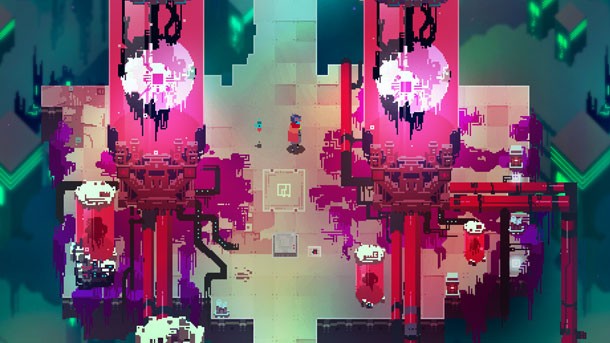
One of the ways Hyper Light Drifter stands out aesthetically from similar games is in part thanks to the history of the game’s artists, and its non-video game inspirations. “There are a lot of bad-looking pixel art games out there, and I hope ours is not,” Preston says. He, as well as the other artists on the team, trained as traditional artists, and taught themselves pixel art through the course of development. Preston also points to the films of Studio Ghibli. “Nausicaä of the Valley of the Wind is the biggest one for me,“ Preston says. “Aesthetically, it is very grand and touching in a way, and it resonated with me forever.” The inspiration is clear in the game, as its mysterious world is one that clearly has a strained relationship with abandoned technology.
Through the course of our discussion, Heart Machine emphasized the importance of secrets and discovery in Hyper Light Drifter. The desire for mystery influences every aspect of the game, perhaps most prominently in its insistence on avoiding text and dialogue. “Writing can kind of destroy the mystery, which we have a lot of,” Blyth says. “You don’t want to just say everything.” Preston goes so far as to call the process of explaining a story and gameplay mechanics without text as miserable. “We’re not allowed to be lazy,” Blyth says, “It’s been a challenge and it’s bet ter for it.”
Heart Machine realizes that upon release, Hyper Light’s figurative silence might be a point of contention for players, but it trusts its audience, and hopes a community will build around the game to solve its mysteries and intentionally ambiguous mechanics. “It has to be an expectation of any game maker these days – the Internet exists.” Preston says. Even though Hyper Light Drifter looks like a classic game, it was a game funded on the promise of its future as opposed to the history of its creators. After spending time with the game, it’s safe to say Heart Machine’s trust is founded.
To learn how Zelda both actively influenced development of Hyper Light Drifter and how it also taught the team what not to do, head to page four.
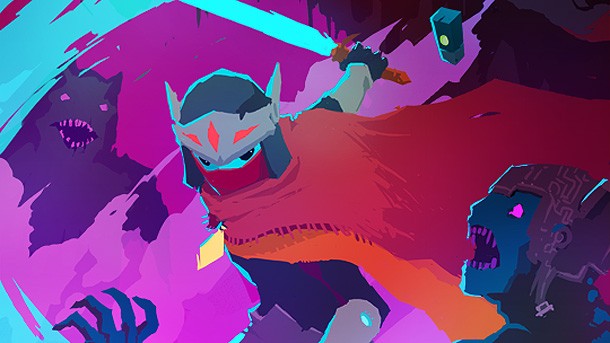
The Lessons Of Zelda
A common point of reference for Hyper Light Drifter is the Legend of Zelda. It’s a game Heart Machine called out in its Kickstarter pitch and one you will inevitably think about while playing the game. Preston, however, uses Nintendo’s classic series for more than just what it does right. “Even the bad Zelda stuff taught me about things I don’t want to do,” says Hyperlight Drifter creator Alex Preston.
Hyper Light Drifter has an overhead perspective, sword combat, and abundant points of discovery, but you won’t find puzzles (a Zelda mainstay) in the traditional sense. Both Preston and Blyth agree the game is more inspired by the concept of Zelda than Zelda itself, calling out the complete lack of hand-holding and allure of discovery from the original 1985 game as a big design motivator. “Skyward Sword was a rigid pile of misery,” Preston jokes, lamenting the continuous backtracking and excessive tutorials.
Preston likes Zelda. “I might not sound like it right now, but I do,” he assures. “Ocarina is still one of my favorite games of all time and I can still go back and play it, but the things I take from it are both the negative and positive. I feel very strongly about it because I embrace it so much and it was such a formative experience,” Preston says. “I’m very critical of it because of the way it has informed me over the years.”
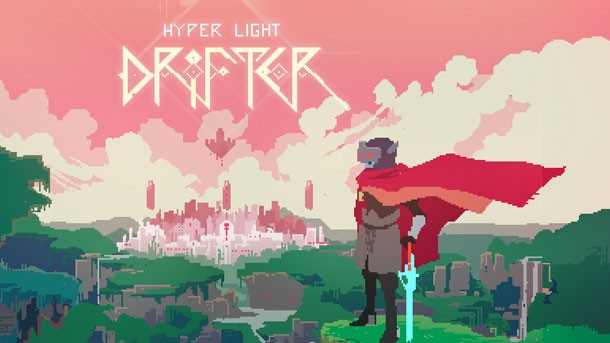
- Block puzzles
- Numbers
- Zombies
- Teleporting enemies
- Poison
- Small, difficult to hit enemies born from one large enemy
- Long repetitive backtracking
- Confirmation messages
- Grinding
For more on Hyper Light Drifter, including details on its difficulty and why it is not a roguelike, head here. Hyper Light Drifter releases on PC and Mac March 31, with release planned for consoles later this year.

Get the Game Informer Print Edition!
Explore your favorite games in premium print format, delivered to your door.
- 10 issues per year
- Only $4.80 per issue
- Full digital magazine archive access
- Since 1991
